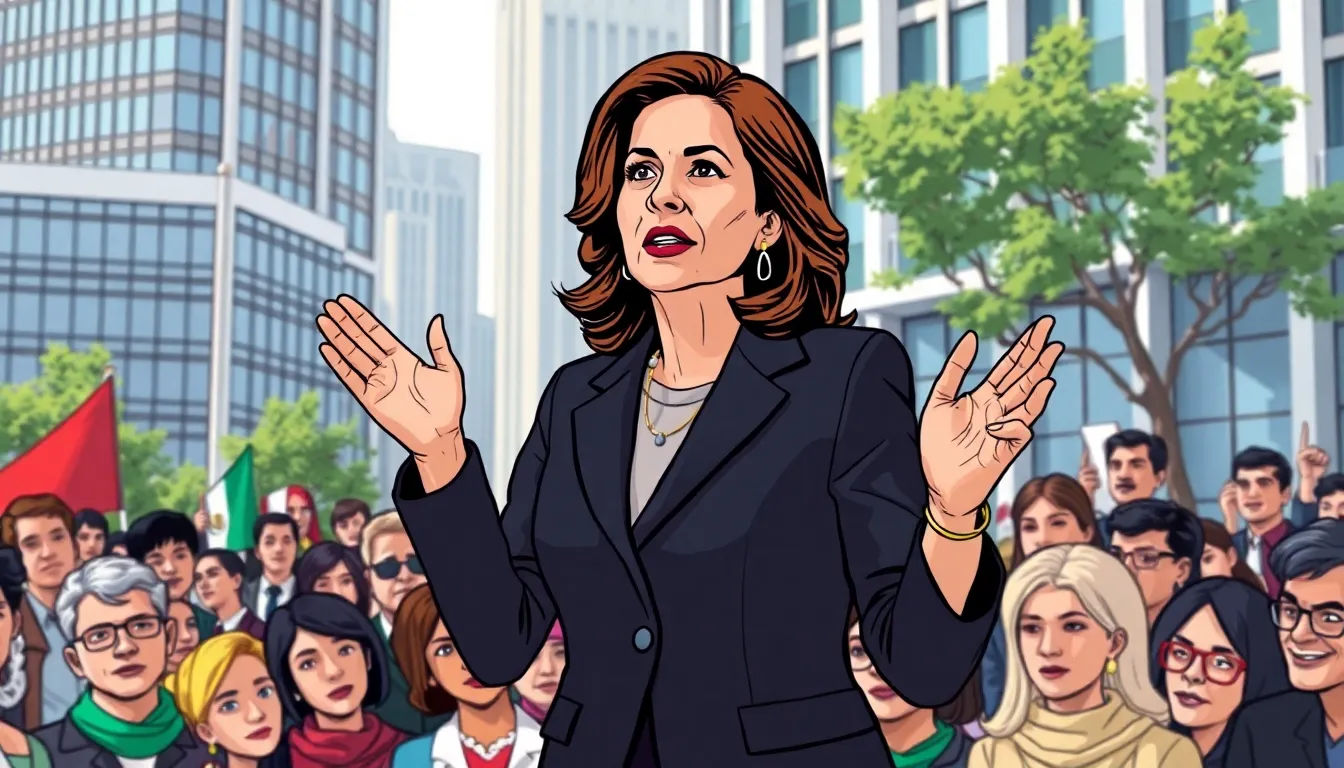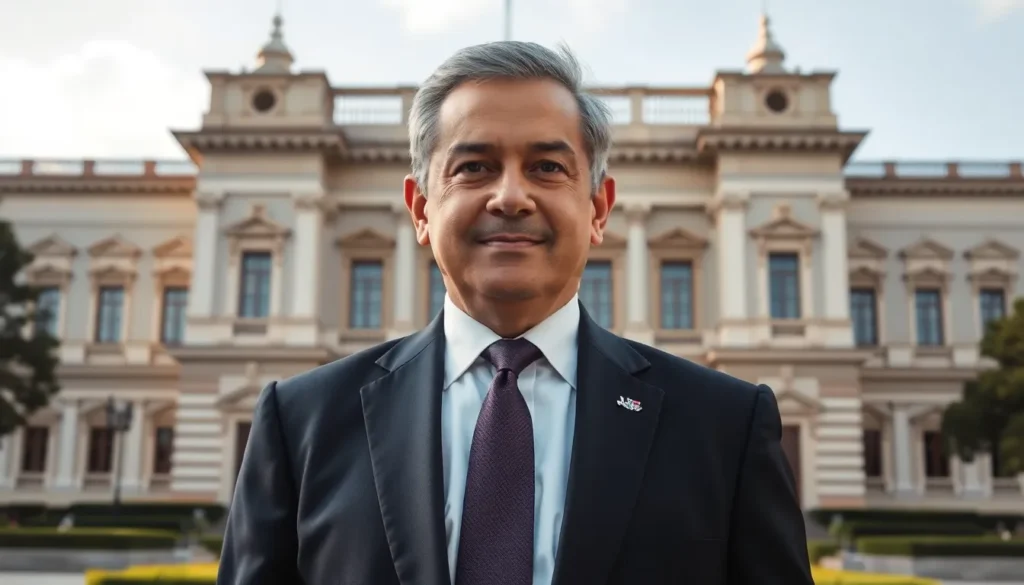Table of Contents
ToggleIn a country known for its rich culture and vibrant history, one question has sparked curiosity among many: Who’s the current president of Mexico? Spoiler alert: it’s not a taco or a mariachi band. As the nation navigates through challenges and triumphs, the leadership plays a pivotal role in shaping its future.
Overview of Mexico’s Presidency
Mexico’s presidency plays a crucial role in shaping national policies and governance. The president leads the executive branch, making decisions that influence both domestic and international affairs. Each president serves a term of six years, with no possibility for re-election. As of now, the presidency is held by Andrés Manuel López Obrador, whose administration has focused on anti-corruption measures and social programs.
Significant challenges face the president, including economic inequality and organized crime. Leadership during crises is essential, as seen during the COVID-19 pandemic. Notable public health policies were implemented to address the crisis while balancing economic interests.
Regularly, the president addresses the nation through press conferences and social media. Direct communication allows citizens to stay informed on governmental actions and initiatives. The president’s approval ratings serve as a barometer for public sentiment, reflecting opinions on policies and leadership effectiveness.
The National Palace in Mexico City serves as the official residence and workplace. It’s a historic site with deep cultural significance. Various ceremonies, including the annual Independence Day celebration, take place there. Foreign dignitaries also visit the palace for official meetings.
Political dynamics in Mexico often involve multiple parties, but the president’s party wields considerable influence in the Congress. Legislative approval is necessary for many initiatives, highlighting the importance of collaboration across different political factions. Understanding the current president’s strategies provides insight into Mexico’s evolving political landscape.
Historical Context of Female Leadership in Mexico

Female leadership has evolved significantly in Mexico, reflecting broader social and political changes. The involvement of women in high-level positions has gained momentum in recent decades.
Notable Female Leaders
Claudia Sheinbaum serves as the current mayor of Mexico City, representing a significant milestone. She became the first woman elected to this position in 2018. Throughout history, women like Sor Juana Inés de la Cruz and Rosalía Arteaga have made their marks, influencing cultural and political landscapes. Elena Poniatowska, an acclaimed author and journalist, contributed to the dialogue around women’s rights and social issues. Each of these leaders has paved the way for future generations in Mexican politics.
The Role of Women in Politics
Women play an increasingly vital role in shaping Mexico’s political discourse. Recent data shows that female representation in the Mexican Congress reached approximately 50% in 2021. This rise in representation underscores the importance of women’s perspectives in government decision-making. Engaging women in political processes leads to more inclusive policies that benefit diverse communities. Advocacy groups and political parties now prioritize gender equality as a central theme in their platforms. Such dynamics illustrate the progressive shift in the perception of women’s roles in governance.
Current President of Mexico
Andrés Manuel López Obrador serves as the current president of Mexico. His leadership focuses on tackling pressing issues within the nation, reflecting a commitment to significant reform.
Background and Career
López Obrador, commonly known as AMLO, began his political career in the late 1970s. He rose through the ranks of the Institutional Revolutionary Party before founding the Party of the Democratic Revolution. As the mayor of Mexico City from 2000 to 2005, he gained recognition for his social programs and urban reforms. Winning the presidency in 2018 marked a pivotal moment in his career, demonstrating widespread support for his vision of change. His educational background includes studies in political science, which informs his approach to governance.
Key Policies and Initiatives
López Obrador prioritizes anti-corruption measures and social welfare initiatives. He established the National Guard to combat organized crime and enhance public safety. Economic programs aim to address poverty and inequality, including scholarships for students and pensions for the elderly. Additionally, he emphasizes infrastructure development, launching significant projects like the Maya Train and the airport in Santa Lucía. Regular press conferences and social media engagement help him connect directly with the public, fostering transparency and accountability.
Public Perception of the President
Public sentiment regarding Mexico’s president reflects diverse opinions and perspectives. Factors like approval ratings and media portrayal significantly shape how citizens perceive leadership.
Approval Ratings
Approval ratings provide measurable insights into the public’s support for President Andrés Manuel López Obrador, often referred to as AMLO. According to recent surveys, AMLO’s ratings fluctuate, typically between 55% and 65%. These figures often reflect responses to his social programs, economic initiatives, and anti-corruption policies. He maintains an approval rating higher than many previous presidents, indicating a solid base of support. His approach to transparency and direct communication has resonated with segments of the population. Criticism exists regarding handling specific issues, such as the COVID-19 pandemic’s economic impact; however, overall, approval ratings showcase a resilient backing from the public.
Media Representation
Media representation of AMLO plays a critical role in shaping public opinion. News outlets provide varied perspectives on his policies and public engagements, influencing narrative direction. Coverage often highlights his commitment to social reforms and anti-corruption measures. Journalistic tone ranges from supportive to critical, impacting how the public perceives his effectiveness. Social media serves as another vital platform for discussion, enabling AMLO to directly engage with citizens. His frequent press conferences also characterize media dynamics, allowing for timely responses to current events. Consequently, this blend of traditional media and digital platforms contributes to a nuanced portrayal of leadership in Mexico.
The current presidency of Mexico under Andrés Manuel López Obrador marks a pivotal moment in the nation’s history. His focus on anti-corruption and social reform reflects a commitment to addressing longstanding issues that affect many citizens. The evolving political landscape showcases an increasing representation of women in leadership roles, highlighting a shift towards inclusivity in governance.
As the country navigates challenges such as economic inequality and public health crises, effective leadership remains crucial. López Obrador’s approach to communication and engagement with the public illustrates the importance of transparency in fostering trust. Understanding these dynamics not only enriches the perspective on Mexico’s political climate but also emphasizes the significance of leadership in shaping the future of the nation.




